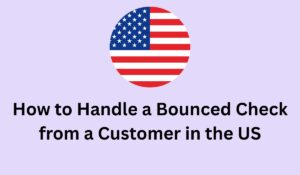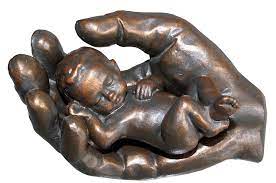Introduction
How to Handle a Bounced Check from a Customer in the US | Bounced checks can be a major headache for any business. Whether you run a retail store, offer services, or rent property, receiving a bad check from a customer in the United States can disrupt your cash flow, waste your time, and create legal complications. Fortunately, there are smart, legal steps you can take to resolve the issue efficiently while protecting your business reputation.
This guide outlines exactly how to handle a bounced check, including communication tips, legal options, and preventative strategies.

What Is a Bounced Check?
A bounced check—also known as a bad check or NSF (non-sufficient funds) check—is one that your bank refuses to process because the customer:
-
Doesn’t have enough funds in their account
-
Wrote the check on a closed account
-
Stopped payment without a valid reason
-
Gave a fraudulent or altered check
Regardless of the cause, you need to take immediate, strategic action.
Step-by-Step Guide to Handling a Bounced Check
1. Contact Your Bank
Before doing anything else, call your bank or check your online statement to confirm that the check bounced and why.
-
Ask if the bank plans to reprocess the check automatically.
-
Request any NSF return codes to help understand the cause.
-
Check if you’ve been charged a return check fee.
This gives you all the facts before you contact the customer.
2. Reach Out to the Customer Immediately
Once you confirm the check bounced, contact the customer politely but firmly. It’s possible the issue was an honest mistake.
How to Approach the Customer:
-
Use neutral, non-accusatory language.
-
Provide them a copy or photo of the bounced check and bank notice.
-
Offer options to repay (e.g., cash, cashier’s check, online transfer).
-
Set a clear deadline (typically 7 to 10 days).
If they respond promptly and make good on the payment, you may decide to not pursue further action.
3. Send a Formal Demand Letter
If the customer fails to respond or refuses to pay, your next step is to send a written demand for payment. This is required in many states before you can take legal action.
What to Include in a Demand Letter:
-
Date and amount of the original check
-
Reason the check was returned
-
Request for payment (including return check fees, if applicable)
-
Deadline (usually 10–30 days depending on the state)
-
Statement of intent to pursue legal action if ignored
Example State Requirements:
-
California: 30 days
-
Texas: 10 days
-
Florida: 7 days
Send the letter via certified mail with return receipt so you have proof of delivery.
4. Reprocess the Check (Optional)
Some banks will automatically redeposit a bounced check, especially if marked “NSF.” If not, you can request to redeposit it yourself—but only after confirming the customer has enough funds. Avoid reprocessing multiple times without permission, as this can lead to additional bank fees.
5. Take Legal Action (If Necessary)
If the customer ignores your demand letter or refuses to pay, you have legal options:
File in Small Claims Court
-
File a claim to recover the check amount, bank fees, and statutory damages.
-
Court limits vary by state (e.g., $5,000 in NY, $10,000 in CA).
-
No attorney is required in most small claims courts.
Report to Local Authorities
If the check was written fraudulently or with intent to deceive, you can file a complaint with:
-
Local police
-
District Attorney’s office
-
State attorney general
They may pursue criminal charges under state bad check laws.
6. Consider a Collection Agency
If the amount is large or legal options aren’t working, consider hiring a collections agency. They typically charge 25–50% of the recovered amount, so weigh the costs carefully.
7. Document Everything
Maintain a paper trail for every step:
-
Copy of the bounced check
-
Bank notifications
-
Demand letters and delivery receipts
-
Emails, texts, or voicemails
-
Payment attempts or failed promises
Proper documentation will support your claim in court if needed.
How to Prevent Bounced Checks in the Future
Prevention is key—especially for small businesses that rely on timely cash flow.
1. Set a Clear Payment Policy
Display your policy on invoices and receipts. Include penalties for returned checks.
2. Use Check Verification Services
Third-party services (e.g., TeleCheck or Certegy) screen checks for potential risk.
3. Require Identification
Always ask for valid ID when accepting a check. Note driver’s license number on the check.
4. Accept Certified or Electronic Payments
Encourage customers to pay by credit card, ACH, Zelle, Venmo, or cashier’s checks for large transactions.
5. Keep a “No Further Checks” List
If someone bounces a check and doesn’t make it right, refuse to accept checks from them in the future.
When Should You Forgive and Move On?
Sometimes, the amount may be too small to justify legal action. Consider forgiving the debt if:
-
The amount is under $100
-
The customer has a long-standing relationship
-
It’s a first-time issue and the person is genuinely apologetic
However, document the incident and don’t accept further checks from them.
Conclusion
A bounced check doesn’t have to mean a financial disaster—but ignoring it can be costly. By acting quickly and following a professional, legal process, you can recover your losses and protect your business from future issues. Always document everything, know your state’s laws, and take steps to prevent bounced checks before they happen.












